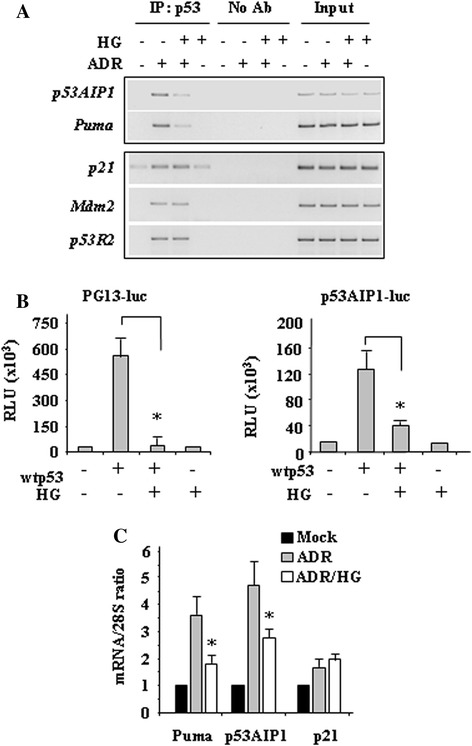Figure 2.

High glucose (HG) culture condition reduces the p53/DNA binding and transactivation functions mainly on apoptotic genes. (A) ChIP analyses performed with anti-p53 antibody on HCT116 cells treated with ADR (2 μg/ml) in 2% FBS culture medium with or without HG. PCR analyses were performed on the immunoprecipitated DNA samples using specific primers for the p53 target promoters. A sample representing linear amplification of the total chromatin (Input) was included as control. Additional controls included immunoprecipitation performed with nonspecific immunoglobulins (No Ab). (B) H1299 cells were transiently co-transfected with PG13-luc or p53AIP1-luc reporters and wtp53 plasmid. Twenty-four hours after transfection culture medium was changed with a medium containing 2% FBS with or without HG. Results, normalized to β-gal activity are the mean ± S.D. of three independent experiments performed in duplicate. *P = 0.001. (C) RNA samples were extracted by HCT116 cells treated as in Figure 1 and used for RT-PCR. The mRNA level of specific p53 target genes was analysed by densitometry and plotted as the expression ratio to control 28S expression. Data are the mean ± S.D. of two independent experiments. *P = 0.001.
